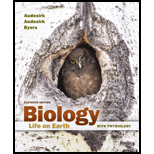
Concept explainers
Discuss some of the problems that would result. If the human heart were made of skeletal muscle instead of cardiac muscle.
To discuss:
The problems that would result if the human heart were made of skeletal muscle instead of cardiac muscle.
Introduction:
Heart is a muscular organ which helps in transportation of oxygen and nutrients through the blood into different parts of the body. It is also involved in removing carbon dioxide and other metabolic waste from the body.
Explanation of Solution
Skeletal muscle is striated, unbranched, voluntary muscle, which is under the control of the somatic nervous system. Cardiac muscle is found in the heart. It is also striated due to the presence of regular arrangement of sarcomeres. It is branched and involuntary muscle, which is under the control of the autonomous nervous system. Cardiac muscle is found only in the heart as it is a specialized type of muscle tissue. Its key role is to pump blood in different parts of the body. It helps in transportation of oxygen and nutrients through blood.
Skeletal muscle is voluntary in nature as one can cause their movement it according to their own wish, whereas cardiac muscle is involuntary (their movement is not under our control) and it is active all the time.
If the heart was made up of skeletal muscle, then after performing a constant workout, the mortality rate would have increased and this would have led to the condition of muscle fatigue and stopped heart from functioning. In cardiac muscle, muscle fatigue condition does not arise as it contains numerous mitochondria as compared to skeletal muscle. Presence of mitochondria results in the continuous supply of energy to the heart. Muscle fatigue leads to cause oxygen depletion in the body. Cardiac muscle provides non-stop supply of oxygen and nutrients into different parts of the body.
Skeletal muscle can easily get tired due to depletion of oxygen, whereas due to the presence of a large number of mitochondria in cardiac muscles, it is involved in the continuous supply of oxygen and nutrients to different parts of the body.
Want to see more full solutions like this?
Chapter 41 Solutions
Biology: Life on Earth with Physiology (11th Edition)
Additional Science Textbook Solutions
HUMAN ANATOMY
Fundamentals Of Thermodynamics
Genetics: From Genes to Genomes
Campbell Essential Biology (7th Edition)
Microbiology Fundamentals: A Clinical Approach
- Anwser these Discussion Questions: Part One Why were the plants kept in the dark prior to the experiment? Why is this important? Why is it important to boil the leaf? Explain why it was necessary to use boiling alcohol? What is the purpose of the iodine? Part Two What was the purpose of keeping the leaf in the dark and then covering it with a cardboard cut-out? What conclusions can you draw from this part of the lab? Part Three 7. In this experiment what was the purpose of adding the soda lime? 8. Why was a sealed bag placed around each plant? 9. What happened in the control plants? 10. What was the result on photosynthesis? Part Four 11. Why was a variegated leaf used in this experiment? !2. What conclusions can you draw about starch production in a variegated leaf?arrow_forwardHow did the color differences between the two bacterial species you used in this experiment help you determine if the streak plate method you performed was successful?arrow_forwardseries of two-point crosses were carried out among six loci (a, b, c, d, e and f), producing the following recombination frequencies. According to the data below, the genes can be placed into how many different linkage groups? Loci a and b Percent Recombination 50 a and c 14 a and d 10 a and e 50 a and f 50 b and c 50 b and d 50 b and e 35 b and f 20 c and d 5 c and e 50 c and f 50 d and e 50 d and f 50 18 e and f Selected Answer: n6 Draw genetic maps for the linkage groups for the data in question #5. Please use the format given below to indicate the genetic distances. Z e.g. Linkage group 1=P____5 mu__Q____12 mu R 38 mu 5 Linkage group 2-X_____3 mu__Y_4 mu sanightarrow_forward
- What settings would being able to isolate individual bacteria colonies from a mixed bacterial culture be useful?arrow_forwardCan I get a handwritten answer please. I'm having a hard time understanding this process. Thanksarrow_forwardSay you get AATTGGCAATTGGCAATTGGCAATTGGCAATTGGCAATTGGCAATTGGC 3ʹ and it is cleaved with Mspl restriction enzyme - how do I find how many fragments?arrow_forward
- Which marker does this DNA 5ʹ AATTGGCAATTGGCAATTGGCAATTGGCAATTGGCAATTGGCAATTGGC 3ʹ show?arrow_forwardThe Z value of LOD for two genes is 4, what does it mean for linkage and inheritance?arrow_forwardBiology How will you make a 50-ul reaction mixture with 2uM primer DNA using 10 uM primer DNA stocksolution and water?arrow_forward
 Human Physiology: From Cells to Systems (MindTap ...BiologyISBN:9781285866932Author:Lauralee SherwoodPublisher:Cengage Learning
Human Physiology: From Cells to Systems (MindTap ...BiologyISBN:9781285866932Author:Lauralee SherwoodPublisher:Cengage Learning Human Biology (MindTap Course List)BiologyISBN:9781305112100Author:Cecie Starr, Beverly McMillanPublisher:Cengage Learning
Human Biology (MindTap Course List)BiologyISBN:9781305112100Author:Cecie Starr, Beverly McMillanPublisher:Cengage Learning Biology (MindTap Course List)BiologyISBN:9781337392938Author:Eldra Solomon, Charles Martin, Diana W. Martin, Linda R. BergPublisher:Cengage Learning
Biology (MindTap Course List)BiologyISBN:9781337392938Author:Eldra Solomon, Charles Martin, Diana W. Martin, Linda R. BergPublisher:Cengage Learning





